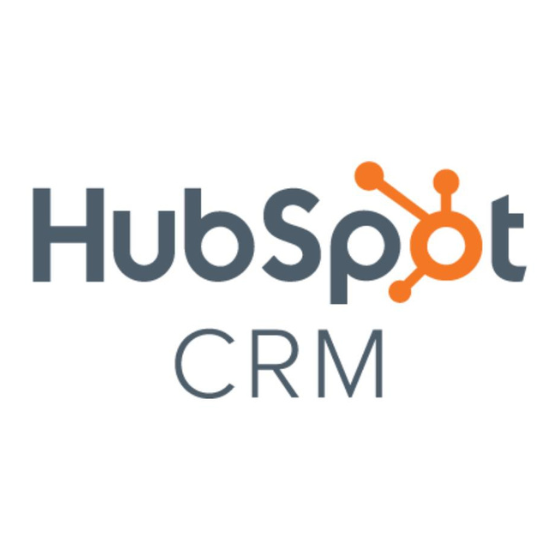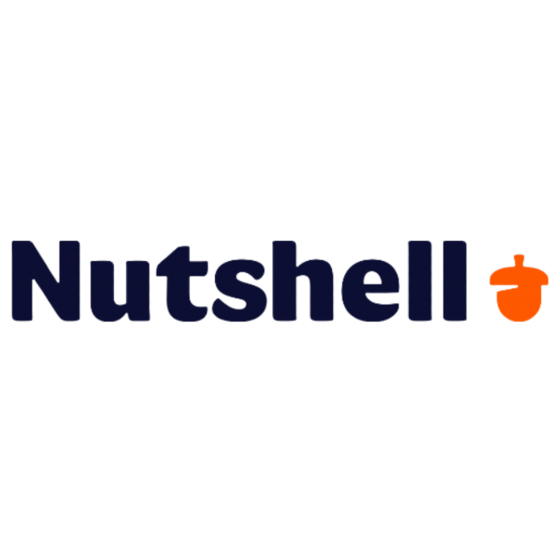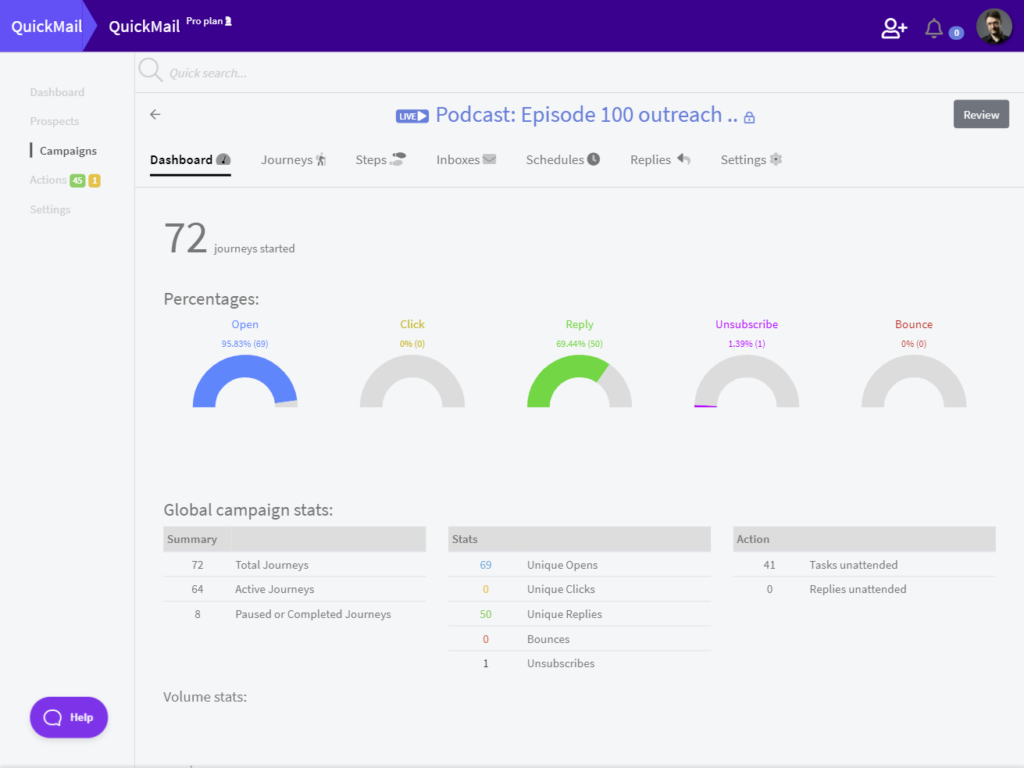10 Best Business Development Software Shortlist
Here's my pick of the 10 best software from the 22 tools reviewed.
Our one-on-one guidance will help you find the perfect fit.
With so many different business development software available, figuring out which is right for you is tough. You know you want to identify, pursue, and manage new business opportunities but need to figure out which tool is best. I've got you! In this post I'll help make your choice easy, sharing my personal experiences using dozens of different business development tools with various teams, with my picks of the best business development software.
Why Trust Our Business Development Software Reviews?
We’ve been testing and reviewing business development software since 2022. As revenue operation leaders ourselves, we know how critical and difficult it is to make the right decision when selecting software.
We invest in deep research to help our audience make better software purchasing decisions. We’ve tested more than 2,000 tools for different RevOps use cases and written over 1,000 comprehensive software reviews. Learn how we stay transparent & our business development software review methodology.
| Tool | Best For | Trial Info | Price | ||
|---|---|---|---|---|---|
| 1 | Best for no-code pipeline customization | 14-day free trial | From $25/user/month | Website | |
| 2 | Best for real-time sales tracking | Free plan available | From $15/user/month (billed annually) | Website | |
| 3 | Best for cold outreach email deliverability | 14-day free trial | From $49/month | Website | |
| 4 | Best for targeting profitability through Google | 14-day free trial | From $9/user/month (billed annually) | Website | |
| 5 | Best for when you need to streamline your sales pipeline | Free trial available | Pricing upon request | Website | |
| 6 | Best for helping revenue teams automate tasks | 7-day free trial | From $39/user/month | Website | |
| 7 | Best as your all-in-one email outreach platform | Free plan available | From $49/month | Website | |
| 8 | Best cloud-based dialing system for CRM software integration | Free trial available | From $30/license (billed annually) | Website | |
| 9 | Best comprehensive solutions for B2B CRM needs | 14-day free trial | From $19/user/month | Website | |
| 10 | Best for collaboration with internal teams, external contractors, and all other stakeholders | Free trial available | From $6/user/month | Website |
Best Business Development Software Reviews
As you read each summary below, you’ll find a screenshot of the tool’s inner workings, the main pain point they strive to address, a breakdown of pricing and trials, and a few pros and cons for a quick look into whether these are a good fit for the way you operate.
CRM Creatio is a versatile platform designed to help teams manage their customer relationships and sales processes. It provides a wide range of tools that help businesses track leads, manage contacts, and automate routine tasks. The product is ideal for sales and business development teams looking to improve their workflow efficiency through a customizable, no-code approach.
Why I picked CRM Creatio: You can easily tailor sales pipelines without any coding skills, which means your team can quickly adapt the software to match your business processes. The platform’s visual workflow designer makes it simple to adjust how deals move through the pipeline. You can create multiple pipelines, set custom stages, and define specific actions for each step in the process. Additionally, with its automation tools, it reduces manual work, letting you focus more on growing your business than on managing software.
CRM Creatio Standout Features and Integrations
Standout features include advanced reporting and analytics tools that give you real-time insights into your sales performance. The platform also includes a built-in calendar and task manager to help your team stay organized and on track with follow-ups. Additionally, it supports omnichannel communication, allowing you to connect with leads and customers through email, phone, and social media from one place.
Integrations include Accelo, Act!, ActiveCampaign, Acumatica, Adobe Analytics, Asana, Microsoft Exchange, Excel, Mailchimp, HubSpot Marketing Hub, Google Calendar, and Tableau.
Pros and cons
Pros:
- Scalable for businesses of all sizes
- Highly customizable interface
- No-code platform for non-technical users
Cons:
- Customization can be time-consuming
- Learning curve for new users
HubSpot CRM is CRM software that offers real-time sales tracking and a comprehensive solution for sales tracking and management. It provides a range features for sales, customer service, content marketing, and operations, making it an ideal choice for businesses looking to manage their sales processes and increase collaboration across teams.
Why I picked HubSpot CRM: HubSpot CRM integrates marketing, sales, and customer service tools on a single platform. This comprehensive suite of tools and resources, including powerful AI tools and an app marketplace, makes it stand out from other options. Its unique selling point is its real-time sales tracking feature, which provides businesses with up-to-date information on their sales activities, making it the best choice for businesses looking to stay on top of their sales activities.
HubSpot CRM Standout Features and Integrations
Standout features include contact management, which centralizes contact information and enriches new contacts with data from over 20 million businesses, and email tracking, which notifies users when a prospect opens an email. Additionally, the CRM provides a visual sales pipeline dashboard, detailed reporting and analytics, and tools for email marketing and lead generation.
Integrations include Gmail, Google Calendar, Outlook, Slack, Facebook Ads, LinkedIn Ads, Zoom, Microsoft Teams, and Asana.
Pros and cons
Pros:
- Automatic activity logging
- Email tracking and notifications
- Customizable deal pipelines
Cons:
- Dependent on internet connection
- Data storage constraints
This automated email solution is designed to help business development teams actually reach their intended recipients during email campaigns instead of landing in the spam folder. The QuickMail platform allows you to send personalized emails to prospects and follow up on priority leads from one inbox that can be shared with your entire team.
Why I picked QuickMail: One of the features that really caught my attention on this platform is the pricing structure. Instead of charging per seat or per email like many other tools, QuickMail charges per inbox. You can have your entire team working in one space without paying extra for every collaborator.
QuickMail Standout Features and Integrations
Standout features include A/B testing that doesn’t require you to start a new campaign with every test and automated email verification that double-checks a recipient’s domain and address for errors and deliverability.
Integrations include Aircall, Amazon SES, BriteVerify, Gmail, HubSpot, Mailjet, Outlook, Slack, and Twilio. For everything else, including everything from Excel Spreadsheets to Salesforce, you can use Zapier.
Pros and cons
Pros:
- Quick configuration and implementation
- Intuitive, straightforward tool navigation
- Very easy and fast to learn
Cons:
- Not as many native integrations
- Limited data enrichment for prospects
This business development software is a CRM that’s designed specifically for Google. Due to the seamless integration with Google Workspace, business owners can set up in just a few minutes and begin automating repetitive tasks, organizing contacts, tracking deals, and building personalized relationships with the email and marketing tools.
Why I picked Copper: This platform stood out because it’s tied to such a big name — Google. Many businesses use this giant for their everyday operations, so having a CRM that works directly with Calendar, Drive, and Gmail just makes sense. You never have to switch tabs to track conversations, add leads, find files, or manage sales processes.
Copper Standout Features and Integrations
Standout features include custom pipeline setup to track deals, personalized reports dictated by your preferred metrics, and a mobile app that’s accessible from wherever you are.
Integrations include Calendly, DocuSign, DropBox, JustCall, LinkedIn, Mailchimp, PandaDoc, RingCentral, Square, and Zapier. All Google tools are also available for integration.
Pros and cons
Pros:
- Quick implementation for current Google users
- Easy to use and navigate
- Purpose-built for Google users
Cons:
- Limited customer support for learning the tool
- Automation rules must be entered manually
This cloud-based tool is primarily a customer lifecycle platform for B2B organizations that helps you find prospects and leverage buyer intent data to better inform your sales and marketing teams. Their tools are designed to provide solutions for lead generation and prioritizing new opportunities. Find data on company mergers, funding announcements, and tech adoptions to better understand your business opportunities.
Why I picked ZoomInfo: One feature that caught my eye on ZoomInfo was the email and phone automation to help you execute multi-touch sales cadences through customizable email templates, tailored scripts for conversations, and account-based selling to contact everyone you need to all at once.
ZoomInfo Standout Features and Integrations
Standout features include conversion tools to turn leads into pipelines with ZoomInfo MarketingOS and no-code data management through ZoomInfo OperationsOS.
Integrations include Dynamics 365 Business Central, Google Analytics, HubSpot, Marketo Engage, Outreach, Salesforce, Slack, Snowflake, Sugar CRM, and Visualize ROI.
Pros and cons
Pros:
- Email verification accuracy is at 98%
- Simple user interface and dashboards
- Very intuitive for new users
Cons:
- Can be overwhelming due to all the features
- Clunky formatting for email templates
Demodesk is a revenue operations platform that focuses on meeting scheduling, real-time guided selling, and customer engagement. Through personalized desktops and coaching during every call, you can empower every sales team member with the customizable tools they need to succeed, including automating non-selling tasks, like meeting prep, CRM documentation, and follow-ups.
Why I picked Demodesk: One feature that really stood out to me about this tool is the types of meeting rooms they offer. Whether you need to meet with customers or collaborate with team members, you can schedule video calls in branded sales rooms with interactive virtual screen technology that allows participants to interact with your product or content on the call.
Demodesk Standout Features and Integrations
Standout features include real-time sales playbooks that automatically load the perfect pitch for every prospect, call shadowing that allows managers to get real insights into how each rep sells, and automated scheduling that handles distribution and handoffs more fairly.
Integrations include Allego, Chorus, Gong, Google Suite, Guru, HubSpot, Make, Microsoft Office, Pipedrive, and Salesforce.
Pros and cons
Pros:
- Provides a customer portal for meetings
- Frequent improvements based on customer requests
- Responsive and supportive customer service
Cons:
- Scheduling isn’t editable after sending a request
- Limited reporting and analytics functionality
As a cloud-based email marketing tool, Hunter is designed to help businesses of every shape and size send out cold emails. In addition to email finding and verifying tools, you can also use this platform to export domain search results, craft personalized emails with templates, insert images into your emails, and handle follow-ups.
Why I picked Hunter: I included this platform on my list because they do so much more than help you build your email list. Once you have a targeted prospect list ready to go, Hunter also provides email marketing campaign guidance at scale with custom attributes, media and attachments, scheduling automation, email tracking, and warm lead identification.
Hunter Standout Features and Integrations
Standout features include a domain search tool that helps you find emails from any company name or website and email verifying tools to ensure the quality of your contact list.
Integrations include Airtable, Close CRM, Copper, Gmail, HubSpot, Outlook, Pipedrive, Salesforce, Zapier, and Zoho CRM.
Pros and cons
Pros:
- User-friendly interface that’s easy to learn
- Guarantees an A-list of prospects with 95% accuracy
- Has a Chrome extension to use the tool in your browser
Cons:
- Sent emails look like they’re sent from your Gmail
- UX isn’t as intuitive as it could be
This is a cloud-based phone system that’s designed to seamlessly integrate with the most popular Help Desk and CRM tools. You can use this tool on desktop and mobile for calling and texting, as well as enhanced collaboration, productivity, and workflow with tons of other features and content.
Why I picked Aircall: I like Aircall as a business development software because it blends your outreach with a variety of other business needs, including customer relationship management with inbound call management. Use this feature to put callers in queues, route calls to the right people, and create a callback list that allows your customer to skip the line and wait to receive a call from your team members when they have time.
Aircall Standout Features and Integrations
Standout features include outbound phone numbers with toll-free and international numbers, warm transfers that allow team members to speak to each other before transferring a call, and call transcriptions to record call activity and history.
Integrations include ActiveCampaign, BigCommerce, Copper, Daton, Enthu, Flip, HappyFox, HubSpot, Klaus, and Microsoft Teams. Aircall offers over 100 native integrations.
Pros and cons
Pros:
- Massive array of integration options
- Only needs to be configured once
- Very easy to learn to use
Cons:
- If the tool lags or freezes, it forces you to disconnect your call
- Conference calls are a little clunky
Because it’s an all-in-one CRM platform, Nutshell is designed to be simple enough for everyone on your team to use while incorporating sophisticated tools into your workflow. With Nutshell, you don’t have to separate your sales and marketing tools. Everyone can use the same platform for sales automation, pipeline management, email marketing, and team collaboration.
Why I picked Nutshell: This tool is one of my favorites because of the web form collection feature. With this tool, you can capture all the information you need from prospects and collect it in a central repository for automated management and easy access for your entire team. Add custom forms to any website with just two clicks to gather personal information or get answers to unique questions.
Nutshell Standout Features and Integrations
Standout features include Board View, which offers interactive pipeline management that allows your team to drag and drop leads into every sales stage, and contact management that ensures you can import your contact, emails, and calendar from any source.
Integrations include 3CX, ActiveCampaign, Box, Constant Contact, FreshMail, Gravity Forms, Kixie, Mailchimp, Slack, and Trello. Find over 50 native integrations on Nutshell.
Pros and cons
Pros:
- Outstanding support team for technical issues
- Mobile-app friendly for iOS and Android
- Easy to maintain without technical knowledge
Cons:
- Limited email scheduling – only full sequences available
- iPhone app has limited functionality
Sync
Best for collaboration with internal teams, external contractors, and all other stakeholders
If you need a business development software that targets teamwork for project management, Sync.com provides a cloud-based file-sharing and document storage platform to enhance your communication tools. This platform can help you send and receive files, preview documents, organize folders, back up files, and control user permissions to involve customers, clients, contractors, and other stakeholders without risking sensitive information.
Why I picked Sync.com: I consider this tool essential for business development teams because it includes groundbreaking data protection features. Whether you need to ensure HIPAA compliance for medical providers or protect a new product that’s still under development, this platform provides enterprise-grade security infrastructure and support.
Sync Standout Features and Integrations
Standout features include access to files from anywhere, including computers, the web, and mobile devices, centralized folders for internal team members, and cloud storage to free up more space on your servers.
Integrations include Microsoft Excel and Microsoft Word.
Pros and cons
Pros:
- Priced for single users and businesses
- Easy for non-tech savvy users to learn
- Simple and straightforward to implement
Cons:
- Limited service diversity due to security
- No CRM system integrations to maintain security
Other Business Development Software
I know the list above seems pretty comprehensive but there are so many different types of businesses out there, you might find an even better fit in this list of my business development software runners-up.
- Gong
Revenue intelligence platform to increase visibility
- Visual Visitor
For consent-based website visitor identification
- CloudTalk
For helping enterprise businesses connect with customers
- Pipedrive
CRM platform for automating business processes
- Fyle
Mobile-based expense-management tool for organizations of any size
- LeadGrabber Pro
Platform for building B2B prospect lists with email verification
- Hootsuite
Social media management tool to increase engagement for SMBs
- Calendly
Shared scheduling software designed for small and medium companies
- HubSpot Marketing Hub
All-in-one marketing software for large organizations
- Mailshake
For automating cold email outreach by improving domain reputation
- Trello
Team-based solutions for marketing, design, or engineering teams
- LinkedIn Sales Navigator
Software for advanced prospect search and targeting
Related Business Development Software Reviews
If you still haven't found what you're looking for here, check out these tools closely related to business development software that we've tested and evaluated.
- CRM Software
- Sales Software
- Lead Management Software
- Business Intelligence Software
- Contract Management Software
- Revenue Management System
Selection Criteria For Business Development Software
Selecting the right business development software involves carefully assessing its functionality to meet specific use cases that are critical in managing revenue operations. Having personally tried and researched these tools, I focus on how well they address the needs and pain points of software buyers.
Core Business Development Software Functionality: 25% of total weighting score
To be considered for inclusion on my list of the best business development software, the solution had to support the ability to fulfill common use cases:
- Streamlining lead generation processes
- Automating routine sales tasks
- Enhancing customer relationship management
- Generating detailed sales reports
- Managing sales pipelines effectively
Additional Standout Features: 25% of total weighting score
- Innovative predictive analytics for better forecasting
- Unique customization options that allow deeper personalization
- Exceptional user interface designs that enhance user experience
- Advanced integration capabilities with new digital tools
- Groundbreaking automation features that set new standards in efficiency
Usability: 10% of total weighting score
- Intuitive user interface that simplifies complex processes
- Minimalistic design that enhances user engagement
- Quick access to frequently used tools
Onboarding: 10% of total weighting score
- Straightforward setup procedures
- Comprehensive resource libraries that speed up learning
- Interactive guides and support systems to assist new users
Customer Support: 10% of total weighting score
- Rapid response times to inquiries
- Multiple support channels for convenience
- Proactive customer service that anticipates user needs
Value For Money: 10% of total weighting score
- Competitive pricing with clear benefits
- Flexible pricing models that cater to various business sizes
- Cost-effective features that provide substantial ROI
Customer Reviews: 10% of total weighting score
- Strong user satisfaction rates
- Positive feedback on functionality and user support
- Constructive criticisms that have been actively addressed
Each aspect of the software is meticulously evaluated to ensure that it not only meets the basic requirements of business development but also brings additional value that can transform revenue operations. Selecting software that aligns well with these criteria ensures that businesses can effectively enhance their growth and operational efficiency.
How To Choose Business Development Software
With so many different <Focus Term> solutions available, it can be challenging to make decisions on what tool is going to be the best fit for your needs.
As you're shortlisting, trialing, and selecting <Focus Term>, consider the following:
- What problem are you trying to solve - Start by identifying the <Focus Term> feature gap you're trying to fill to clarify the features and functionality the tool needs to provide.
- Who will need to use it - To evaluate cost and requirements, consider who'll be using the software and how many licenses you'll need. You'll need to evaluate if it'll just be the revenue operation leaders or the whole organization that will require access. When that's clear, it's worth considering if you're prioritizing ease of use for all or speed for your <Focus Term> power users.
- What other tools it needs to work with - Clarify what tools you're replacing, what tools are staying, and the tools you'll need to integrate with, such as accounting, CRM, or HR software. You'll need to decide if the tools will need to integrate together or if you can replace multiple tools with one consolidated <Focus Term>.
- What outcomes are important - Consider the result that the software needs to deliver to be considered a success. Consider what capability you want to gain or what you want to improve, and how you will be measuring success. For example, an outcome could be the ability to get greater visibility into performance. You could compare <Focus Term> features until you’re blue in the face but if you aren’t thinking about the outcomes you want to drive, you could be wasting a lot of valuable time.
- How it would work within your organization - Consider the software selection alongside your workflows and delivery methodology. Evaluate what's working well and the areas that are causing issues that need to be addressed. Remember every business is different — don’t assume that because a tool is popular that it'll work in your organization.
Trends In Business Development Software For 2025
Business development software shows significant changes in features and functionality designed to enhance revenue operations. These innovations reflect the growing needs of businesses to integrate advanced technologies that streamline workflows, improve customer engagement, and drive sales growth. Here's a concise overview of these trends, reflecting the changing needs and challenges faced by RevOps leaders:
Rapidly Evolving Features
- Automated Workflow Capabilities: Tools are advancing in automating routine tasks, which significantly reduces manual workloads and improves efficiency.
- Real-Time Collaboration Features: Enhancements in cloud technologies facilitate better teamwork across different geographies, crucial for remote and hybrid work environments.
Novel and Unusual Functionalities
- Blockchain Integration: Some platforms are beginning to incorporate blockchain to secure transactions and enhance data integrity, a novel approach in traditional business development environments.
- Augmented Reality for Sales Presentations: Innovative tools integrate AR to create immersive presentations and proposals, providing a competitive edge in client engagements.
Most Important and In-Demand Features
- Comprehensive Analytics and Reporting: Businesses demand sophisticated analytics to derive actionable insights from their operations and performance metrics.
- CRM Integration: Seamless integration with CRM systems remains a top priority to ensure that all customer interactions are tracked and leveraged for maximum impact.
Declining Features
- Stand-Alone Tools: There's a decreasing demand for stand-alone solutions as businesses look for all-encompassing platforms that offer end-to-end capabilities.
These trends indicate a clear direction towards making business development software more integrated, intelligent, and interactive. As businesses continue to adapt to rapidly changing market conditions, these tools become integral in crafting strategies that are not only reactive but also predictive, ensuring sustained growth and efficiency in revenue operations.
What Is Business Development Software?
Business development software is a tool that assists organizations in identifying and pursuing growth opportunities. It integrates functionalities for lead generation, market research, client relationship management, and sales strategy implementation. This software provides a platform for streamlining and organizing the various tasks associated with expanding a business, such as managing potential leads, analyzing market trends, and nurturing client and partner relationships.
The benefits of using business development software include enhanced efficiency in managing business growth activities. It automates and simplifies processes, leading to more effective lead management and opportunity identification. The software provides valuable market insights and analytics, aiding in informed decision-making and strategy formulation. Additionally, it supports building and maintaining robust relationships with clients and stakeholders, crucial for long-term business success. By streamlining sales and development tasks, the software helps organizations focus on strategic growth and expansion initiatives.
Features Of Business Development Software
Selecting the right business development software is crucial for enhancing revenue operations efficiently. Here are key features to consider:
- CRM Integration: Ensures seamless synchronization of customer data across platforms.
- Vital for maintaining a unified view of customer interactions and enhancing relationship management.
- Analytics and Reporting: Provides detailed insights into business performance.
- Enables strategic decision-making by analyzing trends and measuring effectiveness of business activities.
- Lead Management: Streamlines the process of tracking and nurturing leads.
- Crucial for optimizing the conversion pipeline and improving sales outcomes.
- Email Marketing Tools: Automates and personalizes communication with prospects and customers.
- Enhances engagement and helps in delivering targeted messages efficiently.
- Proposal Automation: Simplifies the creation and management of proposals.
- Saves time and improves response rates to RFPs and RFQs.
- Task Automation: Reduces repetitive tasks through automation.
- Increases productivity by freeing up time for strategic activities.
- Mobile Accessibility: Allows access to the software via mobile devices.
- Ensures business continuity by enabling teams to work from anywhere.
- Customization Options: Tailors the software to specific business needs.
- Provides flexibility and enhances user adoption by aligning with existing workflows.
- Document Management: Organizes and stores business documents securely.
- Important for maintaining essential records and improving document retrieval efficiency.
Choosing business development software with these features will significantly streamline your revenue operations, ensuring your team remains agile and responsive to market dynamics.
Benefits Of Business Development Software
Business development software plays a crucial role in enhancing the efficiency and effectiveness of revenue operations within organizations. Here are five key benefits:
- Streamlined Lead Management: Simplifies the tracking and nurturing of leads.
- Enables businesses to organize their lead generation activities more effectively, improving conversion rates.
- Enhanced Collaboration: Facilitates communication across teams.
- Essential for ensuring all team members are on the same page, which is critical for fast-paced business environments.
- Data-Driven Insights: Provides analytics on business performance.
- Offers valuable insights that help in making informed strategic decisions, optimizing operations.
- Increased Productivity: Automates routine tasks.
- Reduces time spent on administrative tasks, allowing teams to focus on more strategic activities that drive growth.
- Improved Customer Relationship Management: Integrates with CRM systems.
- Helps maintain a comprehensive understanding of customer interactions, enhancing customer service and satisfaction.
Costs & Pricing For Business Development Software
When choosing business development software, it's crucial to consider various pricing plans that cater to the specific needs and scale of your organization. Each plan typically offers a set of features tailored to different stages of business growth.
Plan Comparison Table For Business Development Software
| Plan Type | Average Price | Common Features |
|---|---|---|
| Basic | $10 - $25 per user/month | Lead management, email integration, basic reporting |
| Professional | $50 - $100 per user/month | Advanced analytics, CRM integration, custom reporting |
| Enterprise | Custom pricing | Full feature access, advanced integrations, dedicated support |
| Free | $0 | Limited features, basic tools, user caps |
Selecting the right plan involves balancing cost with the essential features your business needs to thrive. Remember to evaluate how each plan aligns with your current requirements and growth projections to ensure sustainable scaling.
Business Development Software Frequently Asked Questions
Still trying to get a better handle on business development software? Check out these answers to the most frequently asked questions.
Who uses business development software?
Business development tools offer solutions for nearly everyone. There are platforms that can help startups get the most out of their seed money, software options designed to help enterprise-level organizations, and solutions for every team in your company.
What tools are used for business development?
Business development tools run the gamut of the everyday essentials for your workflow. You’ll see tools designed for prospecting, like data enrichment or email verification, tools made for automation that can auto-dial and leave messages for your entire contact list, and tools that are all-encompassing, including comprehensive CRMs.
How does business development software integrate with existing ERP systems?
Business development software typically integrates with existing ERP systems through APIs or middleware solutions that facilitate data exchange and workflow synchronization. This integration allows businesses to leverage their existing financial, logistical, and operational data within their development activities, enhancing overall efficiency and insight.
Can business development software automate proposal creation?
Yes, many business development software platforms include features that automate proposal creation, utilizing customizable templates and content libraries. This automation helps save time, reduce errors, and maintain consistency across communications, enabling teams to focus more on strategy and less on administrative tasks.
Can business development software manage cross-departmental projects?
Business development software is often designed to support cross-departmental collaboration by providing tools that manage project timelines, resources, and communications across various teams. This capability ensures that all departments are aligned in their efforts, which is critical for complex projects involving multiple stakeholders.
Additional Revenue Operations Software
If you’re looking into business development software, you likely have a wide variety of needs to round out your tech stack. Take a look at these other tools that may complete your setup:
- Business Intelligence Software
- Predictive Analytics Software
- Lead Management Software
- Data Visualization Software
- Marketing Automation Software
- Revenue Operations Software
Conclusion
The first step to accelerating your business operations is to take as much manual labor as possible off the plates of your most valuable team members. Business development software can fill in gaps in your tech stack or help you build one from the ground up. With my breakdown, you have a great place to find the answers you need.
Looking for even more insights into your niche? Sign up for our newsletter for weekly updates from the experts.




















